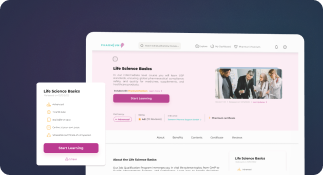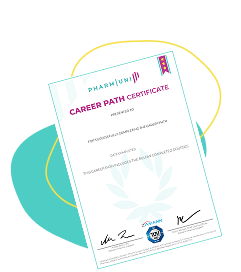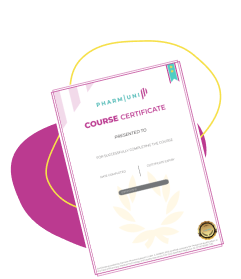Documentation is the cornerstone of quality assurance in any regulated industry. It serves as a structured record that captures essential details, maintains compliance, and provides clear evidence of operations. Effective documentation prevents costly errors, minimizes risks, and supports operational efficiency. In sectors like pharmaceuticals, healthcare, and manufacturing, good documentation practices (GDocP) ensure regulatory compliance, product safety, and process consistency.
This article explores the critical elements of GDocP, detailing how structured records, clear formats, and digital solutions enhance accuracy and reliability, and why training and regular reviews are essential for sustainable compliance.

Why Documentation is Essential for Compliance
Maintaining accurate documentation is crucial for achieving compliance and pholding quality in regulated industries. Proper documentation provides a reliable record of actions and supports transparency and accountability, making it easier for regulators, auditors, and internal teams to verify compliance.
By implementing GDocP, companies reduce errors, streamline workflows, and improve efficiency, ultimately reducing regulatory and operational risks. Beyond compliance, documentation plays a significant role in training new employees, troubleshooting, and process improvement.
Sign up for Introduction to Good Documentation Practices (GDP) Course
Core Elements That Define GDocP
GDocP rely on several core elements. Each component serves a specific purpose in ensuring documentation clarity, reliability, and compliance.
All records should reflect correct details, reducing errors and supporting compliance.
Capture all necessary information, ensuring that documents are thorough and comprehensive.
Maintain uniform formats, terminologies, and layouts across documents, which fosters clarity.
Store documents systematically to ensure easy retrieval during audits and inspections.
Use clear handwriting and readable fonts; unreadable documents can lead to misinterpretation.
Complete records promptly to maintain a continuous, accurate history of actions.
Protect documents against unauthorized access or alterations to maintain integrity.
Structuring Documentation with Standardized Processes
The Importance of Standardized Templates
Using standardized templates is a foundational step in structuring documentation effectively. Templates provide a consistent layout, making it easier for teams to enter information accurately and efficiently. With templates, companies can enforce uniformity across records, ensuring that all critical information fields are covered, reducing omissions. By using pre-designed formats, employees can follow an established framework, which simplifies the documentation process and lowers the chances of human error. This consistency is crucial in regulated industries, where missing or incorrect information can lead to costly compliance issues and delays during audits.
Moreover, standardized templates enhance clarity and readability, making it easier for reviewers to quickly locate key information. During audits or regulatory inspections, structured templates allow external parties to understand the content without confusion or additional clarification. They also support training efforts, helping new employees quickly learn the documentation process. By minimizing variations in record format, templates create an organized and reliable documentation system, improving the overall quality and accessibility of information within the organization.


Establishing a Process Flow for Documentation
Developing a clear process flow is another vital aspect of structuring documentation. A process flow provides step-by-step guidance, helping employees understand the sequence in which documentation tasks should be completed. When a process flow is in place, team members can follow a logical progression, reducing the likelihood of missing essential steps or completing tasks out of order. Process flows make it easier to ensure that every piece of documentation meets required standards and that nothing important is overlooked. This systematic approach supports accuracy and consistency across all records, minimizing the risk of compliance issues and delays.
A well-defined process flow also helps streamline communication within the organization, particularly in multi-departmental projects where different teams contribute to a single document. By establishing an ordered structure, employees can collaborate effectively, knowing their roles and the documentation expectations at each step. Process flows can include visual aids such as flowcharts or checklists, which provide a visual reference for employees. Such tools enhance understanding and reduce ambiguity, helping staff follow standardized procedures seamlessly. Ultimately, a structured process flow ensures that documentation remains clear, complete, and compliant with industry regulations, contributing to improved overall quality.
Standardized Forms and Templates for Consistency
Form Templates
Templates provide structure, ensuring completeness and making it easier to meet regulatory requirements.
Checklist Templates
Checklists guide users in verifying required steps, particularly useful during audits or inspections.
Record-keeping Logs
Logs help track information over time, such as maintenance records, supporting traceability and accountability.
Using Digital Tools to Enhance Documentation
Digital documentation tools help organize, store, and retrieve records efficiently. These tools also streamline archiving, making it easier to locate specific documents.
Digital solutions with version control track changes, ensuring that everyone has access to the most current version of a document, reducing confusion and errors.
Automating data entry minimizes human error, accelerating documentation and improving accuracy in record-keeping.
Documentation Control and Review Processes
Quality Control Techniques for Documentation
Quality control techniques are crucial in ensuring documentation meets necessary standards for accuracy, clarity, and compliance. By incorporating quality control measures, organizations can verify each document’s precision and alignment with internal guidelines before finalization. Techniques such as peer review allow team members to cross-check records, catching errors or inconsistencies that might otherwise be overlooked. This extra layer of scrutiny minimizes risks by ensuring each document meets regulatory standards and internal guidelines. Involving multiple team members in reviews also builds accountability, fostering a shared commitment to documentation quality.
Beyond peer review, automated error-detection tools streamline quality control by catching common issues like inconsistencies and data entry errors. Automated tools save time by addressing routine errors, allowing teams to focus on more complex quality assessments. This combination of human oversight and automation strengthens the quality control framework, ensuring that documentation is precise, compliant, and reliable. Such a dual approach prepares documents for smoother audits and inspections, reducing the likelihood of compliance issues and enhancing the organization’s overall documentation standards.

Role of Regular Audits in Documentation Practices
Regular audits are essential for upholding high standards in documentation, offering a structured review of records and processes. Audits allow for a thorough examination of documentation, ensuring alignment with regulatory requirements and highlighting areas for improvement. By conducting audits, organizations can proactively address gaps in their practices, reducing potential compliance risks. Audits also bring a fresh perspective, identifying inconsistencies and helping teams refine their documentation methods. Early detection of errors through audits minimizes larger issues, safeguarding the organization’s compliance and operational efficiency.
Audits promote continuous improvement by encouraging teams to prioritize accuracy and completeness in their records. Internal and external audits provide valuable learning opportunities, where employees can identify weaknesses and adapt their practices. External audits, in particular, offer an objective review, often introducing best practices to enhance the documentation process. Additionally, audit records demonstrate a commitment to compliance during regulatory inspections, strengthening the organization’s reputation. Regular audits, therefore, play a critical role in reinforcing GDocP and supporting consistent regulatory alignment.
Effective Quality Control Techniques
Peer Review
Peer review introduces an objective perspective, helping detect errors before final approval and contributing to overall quality.
External Audits
External audits provide unbiased insights into documentation practices, proving especially beneficial for highly regulated industries.
Automated Error Detection
Automation tools help identify inconsistencies or common errors, enabling efficient error correction and saving time.
Challenges in Maintaining Documentation Standards
Companies often face several challenges when trying to uphold GDocP. Limited resources, inconsistent processes, and inadequate training are common obstacles. Without sufficient resources, companies may struggle to allocate time or tools for proper documentation. Inconsistent processes lead to confusion, making it harder to achieve uniformity in records. Furthermore, inadequate training prevents employees from fully understanding the importance of GDocP. These factors collectively disrupt documentation quality, making it challenging to maintain compliance. Recognizing these barriers early on helps companies act proactively, which reduces potential compliance risks.
To overcome these issues, companies should develop targeted solutions. Increasing resources for documentation, like digital tools or additional personnel, can support teams. Streamlining processes by creating standard templates ensures consistency across records, which improves accuracy. Moreover, implementing comprehensive training programs equips employees with the knowledge to uphold GDocP standards. Regular refresher courses and feedback sessions reinforce best practices. By tackling these common challenges head-on, companies can ensure smoother operations and better compliance. This approach also strengthens the organization’s commitment to quality assurance and minimizes risks associated with poor documentation.
Methods to Improve Documentation Competency
Improving skills in record-keeping requires targeted training and hands-on practice. Workshops give employees practical insights into GDocP, covering regulatory requirements, industry standards, and quality expectations. During these sessions, participants explore real-life scenarios, which reinforces their understanding of GDocP principles. Hands-on exercises allow employees to apply what they learn in a controlled setting. As they practice, they gain confidence in managing records with accuracy and consistency. With regular workshops, employees stay well-prepared to handle their record-keeping responsibilities effectively and with precision.
In addition, feedback and assessments play a crucial role in skill-building. Regular assessments help identify each team member’s strengths and areas for improvement. After each assessment, managers provide specific, constructive feedback, helping employees refine their approach. Ongoing feedback encourages a mindset of continuous improvement, which is essential in regulated industries. Tracking progress over time also helps managers spot patterns or recurring challenges, allowing for targeted improvements. By combining consistent training, thorough assessments, and meaningful feedback, companies create a culture where strong record-keeping practices flourish. This approach supports quality, compliance, and reliability across the organization.
Conclusion
In Coclusion, GDocP play a crucial role in regulatory compliance, quality assurance, and operational efficiency. When companies focus on key elements like accuracy, accessibility, and timeliness, they build documentation that meets strict regulatory standards and passes audits with ease. Structured records not only help meet these standards but also support continuous improvement by highlighting areas for refinement. Additionally, clear and organized documentation fosters a culture of accountability across the organization, turning documentation practices into a powerful strategic asset. With strong GDocP, companies protect their operations from potential regulatory risks.
To maintain these high standards, companies should embrace digital solutions, invest in employee training, and implement rigorous review processes. Digital tools streamline documentation, making it easier to track changes and access records. Training programs ensure that employees understand GDocP and can consistently apply them. Regular review processes catch errors early, keeping records accurate and up-to-date. By actively addressing these areas, companies uphold strong documentation standards that support quality and compliance. This proactive approach ultimately safeguards the organization’s reputation, reduces risks, and builds a foundation for sustainable growth in a regulated environment.
References

Ershad Moradi
Ershad Moradi, a Content Marketing Specialist at Zamann Pharma Support, brings 6 years of experience in the pharmaceutical industry. Specializing in pharmaceutical and medical technologies, Ershad is currently focused on expanding his knowledge in marketing and improving communication in the field. Outside of work, Ershad enjoys reading and attending industry related networks to stay up-to-date on the latest advancements. With a passion for continuous learning and growth, Ershad is always looking for new opportunities to enhance his skills and contribute to pharmaceutical industry. Connect with Ershad on Facebook for more information.

Quality Management Pharma Course: A Practical Guide to Pharmaceutical Quality Systems in 2026
This practical course guide explains how pharmaceutical quality systems work in real GMP settings. You learn core QMS elements, documentation rules, and inspection expectations. You also explore CAPA, deviations, change control, and risk management, so you build audit-ready habits fast.

Dechallenge in Pharmacovigilance: Meaning, ADR Causality, and ICSR Documentation
Dechallenge is what you observe after stopping a suspected medicine. If symptoms improve, you gain supportive evidence for causality assessment. However, improvement alone does not prove the drug caused the event. So, document drug action, dates, and outcomes clearly. Then compare with rechallenge, which can strengthen causality when safe and justified.

Rechallenge in Pharmacovigilance: Meaning, Positive Rechallenge, and ICSR Reporting
Rechallenge in pharmacovigilance helps you assess causality when symptoms recur after re-exposure. This guide explains meaning, where to record outcomes in an ICSR, and how to judge validity. It also shows why clear timelines and dose details protect patients. Strong documentation also builds your Pharmacovigilance Career Path through better case quality.




